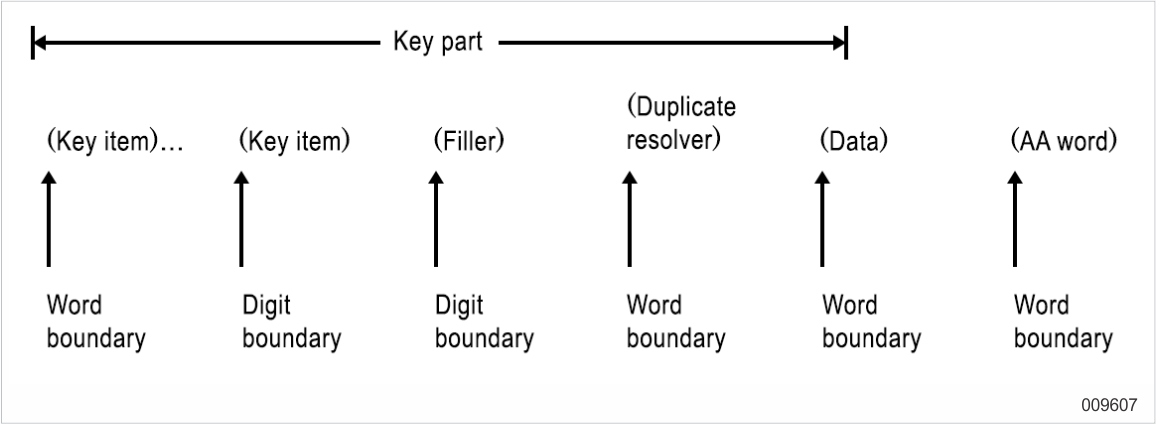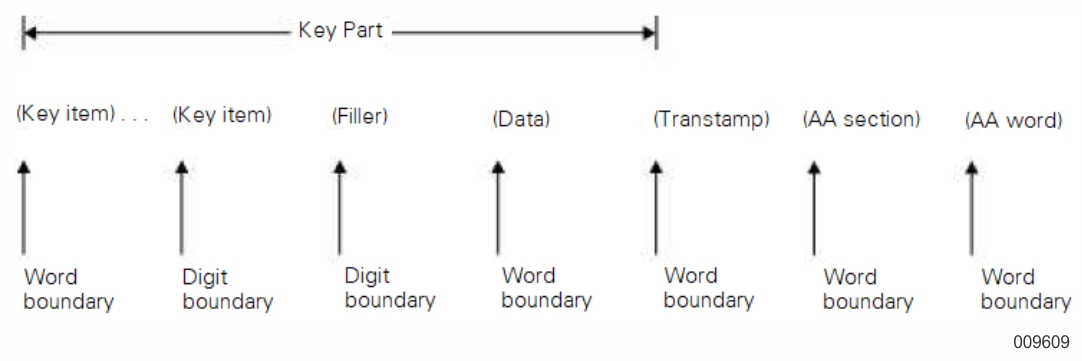Sets and subsets, with the exception of bit vectors, are composed of key entries. Every key entry begins on a word boundary and contains a key part, an AA word, and optional key data. The following figure illustrates key entries.
The key part is composed of key items copied from the data set record and concatenated together. Key items appear in sequence from most significant on the left to least significant on the right. Key items which specify the DESCENDING option are complemented; this keeps the items in collating sequence regardless of the ordering on each item. When duplicates are allowed for an index sequential set or subset, but the FIRST or LAST keyword is not specified, a 1-word duplicate resolver is included in the key part. The duplicate resolver is an AA word pointing to the data set record. It is always word aligned and is preceded by a filler if necessary.
Every key entry includes an AA word. The AA word locates a data set record or, in the case of index sequential coarse tables, another set or subset entry. AA words are always word aligned.
Depending on their declaration in DASDL, some sets and subsets can contain key data. For other sets and subsets, this key data follows the AA word. For index sequential sets and subsets, the key data precedes the AA word.
 |
Although the EXTENDED attribute cannot be explicitly specified in DASDL for sets, DASDL implicitly sets this attribute for all sets and subsets that span an EXTENDED data set. DASDL sets the new key entry size for EXTENDED sets and subsets. |
For sets and subsets that span EXTENDED sectioned data sets, the format is the same except that the duplicate resolver is replaced with the Record Serial Number (RSN) and the AA word is a double word. For sets and subsets that span nonsectioned data sets, the AA word is a single word.
The following figure illustrates key entries.
The following figure illustrates an XE disjoint index sequential set that has the NOFTLOCK and the NO DUPLICATES options set. The format is key item or items followed by key data followed by transtamp. If the set is sectioned, transtamp is followed by the section number. The AA word is found at the end of the key entry format.




